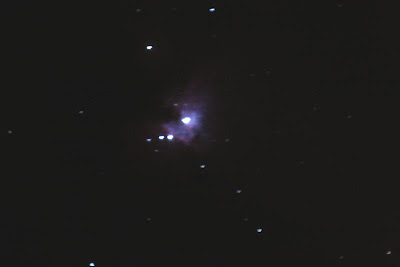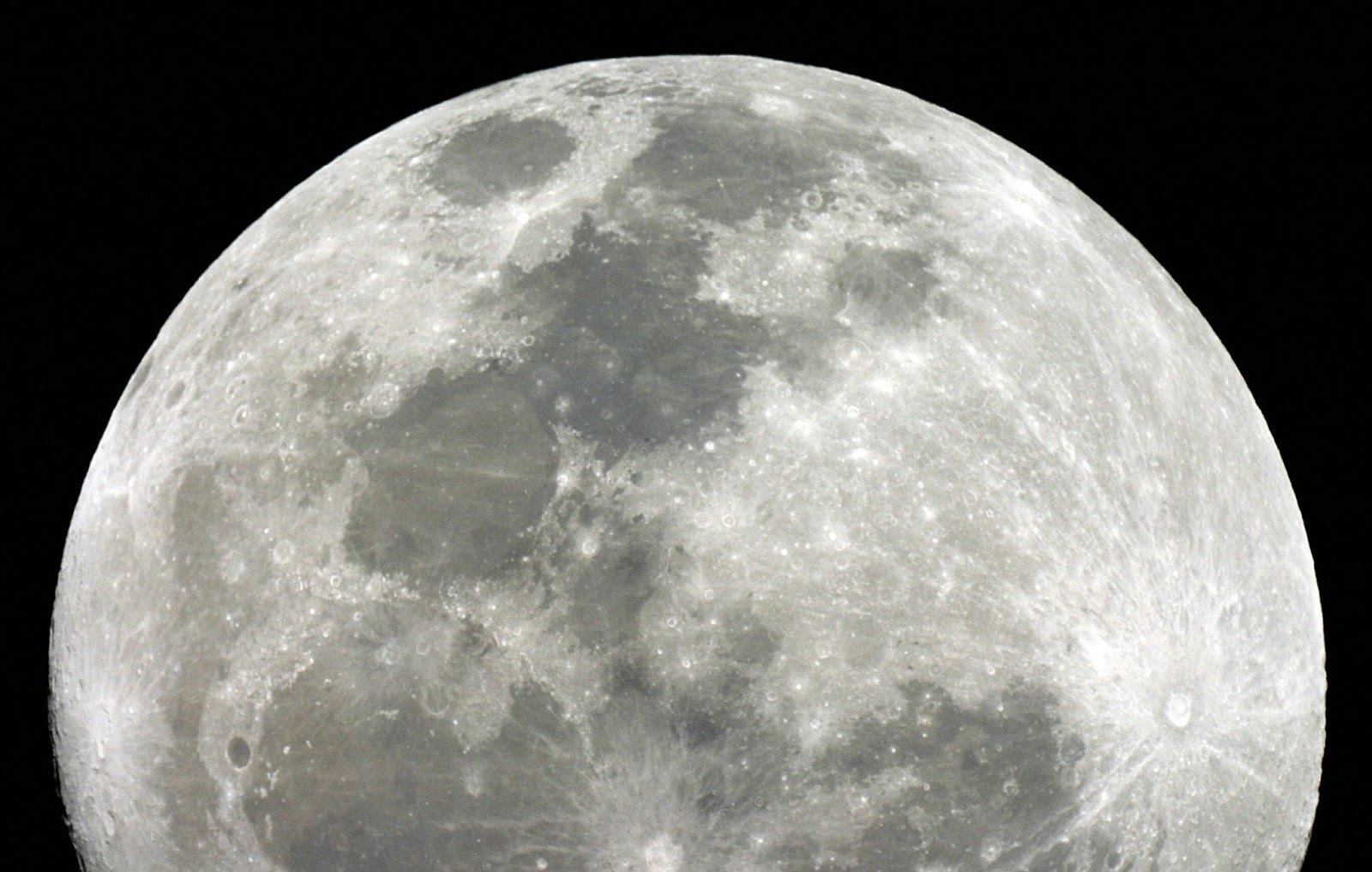Speaking of camping with the ETX, here's a quick diversionary picture of the ETX in camping mode:
The time of day here is actually around 8pm. The camera did a great job of lightening the scene. The only problem with astronomy and state parks (I think this was French Creek State Park in Pennsylvania) is that there are a lot of trees.
My first attempt at DSO photography with my Meade was pretty rough. While the mount is able to shift into an equatorial configuration, you can tell that it doesn't really want to and is much happier as an alt-az mount.
Using approximations and trial and error, you adjust the mount plate to your current latitude, orient the scope as described in the manual, switch the hand controller to Polar mode and align just as you would in alt-az mode.
All things given, tracking in polar mode is great. After slewing to the target, the mount then only uses one motor to keep track of the object. One the plus side, for visual use, the object stays in the viewfinder for a good long time. On the negative side, the standard eye piece sometimes gets into awkward positions. On the other hand, if you're using the visual back, the scope can't slew to everything it would like to since the diagonal would hit the mount.
Despite tracking being better in polar mode, it's still not really good enough for astrophotography. The mount simply isn't built for it.
First Attempt
Here's my first image of M42 using the ETX in polar mode with my Canon Digital Rebel hanging off the visual back:Elongated stars point to a crummy alignment, but look at that color! After using the MallinCam, even this blurry image was tremendous. This was about five 30" frames processed using Registax, then post-processed using Photoshop.
Second Attempt
The alignment this time was a vast improvement over my second attempt, and I dare say this image is quite decent for a beginner!
Apart from my alignment being much better, I pushed up the ISO of the camera. The image is definitely grainier, but there's also a lot more detail.




